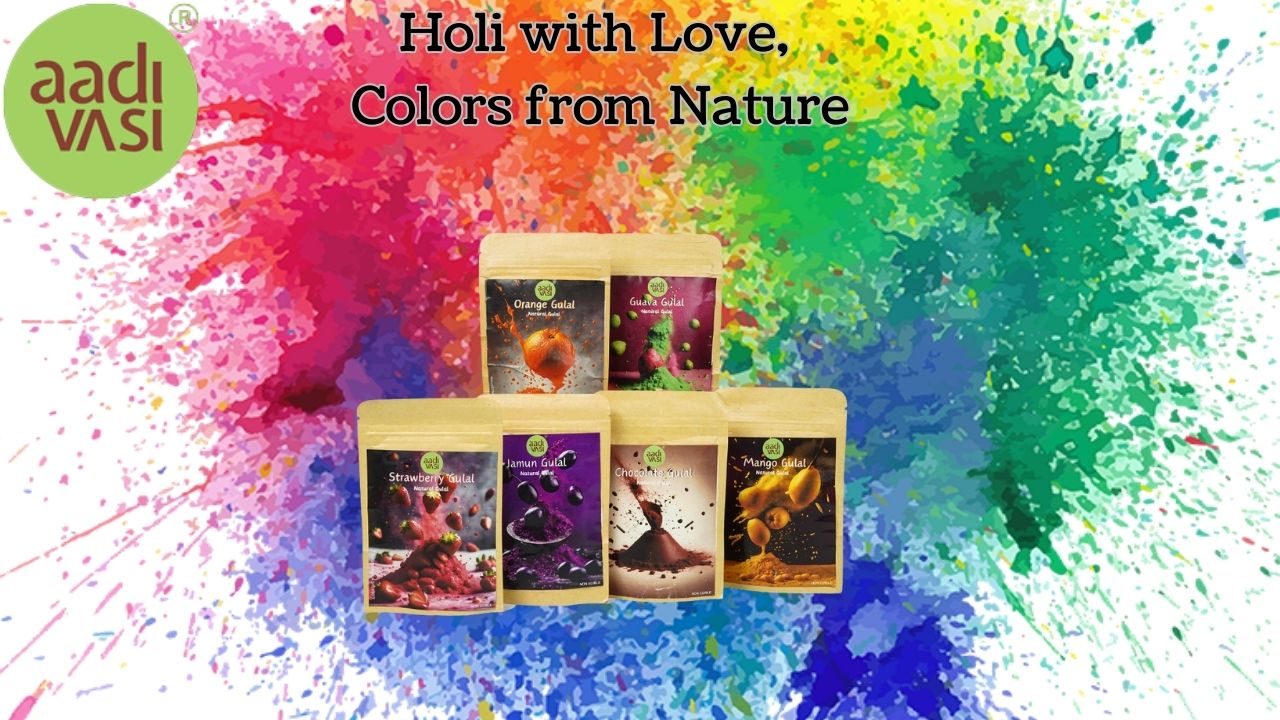Herbal Colors: A Skin-Friendly Way to Celebrate Holi

Herbal Colors: A Skin-Friendly Way to Celebrate Holi
Holi, the festival of colors, is meant to be a celebration of life, joy, and togetherness. But over time, we’ve unknowingly turned it into a chemical warfare on our skin. Think about it—why should a festival that symbolizes love leave your skin itchy and inflamed? This year, let’s go back to our roots with Herbal Colors and truly embrace a Skin-Friendly Holi Celebration. And guess what? These natural colors also make for thoughtful corporate gifts! Platforms like aadivasi.org support eco-friendly initiatives, offering khadi-certified, natural colors made from plant pigments, making it easier to share sustainable joy.
Why Choose Homemade Holi Colors Over Chemicals?
Remember how our grandmothers always had a homemade remedy for everything? There’s wisdom in that. Chemical-free alternative Holi colors are not just kinder to your skin but also to the planet. Those store-bought colors? Packed with heavy metals, synthetic dyes, and irritants. Why expose yourself to them when you can make natural Holi colors at home that are safe, effective, and fun to create?
Step-by-Step Guide to Making Natural Holi Colors
Making eco-friendly Holi colors isn’t rocket science. It’s about using what nature has already given us—simple kitchen ingredients and herbs. Here’s how:
1. Red Color:
- Dry hibiscus flowers and grind them into a fine powder.
- Mix with a little rice flour for texture.
- Alternative: Beetroot juice can be used for a wet organic Holi color.
2. Yellow Color:
- Turmeric is the OG of skin-loving ingredients! Mix it with besan (gram flour) for a rich golden hue.
- Dry marigold flowers can also be crushed for a subtler, fragrant alternative.
3. Green Color:
- Sun-dried and powdered neem or spinach leaves give a natural green shade.
- Prefer a wet color? Soak the leaves in water and strain before use.
4. Blue Color:
- Blue hibiscus or butterfly pea flowers—yes, the ones in your herbal tea—can be dried and ground.
- Alternatively, mix indigo powder with flour for an earthy, smooth blue.
5. Pink & Purple Shades:
- Beetroot or dried rose petals ground into a fine powder create a gorgeous pink.
- For purple, mix a little blueberry extract into water, and boom—nature’s own dye!
Celebrate a Safe Holi with DIY Herbal Color Recipes
What’s better than playing with skin-safe DIY Herbal Colors? Knowing that they are completely non-toxic and smell divine! No more scrubbing off stubborn stains for days. These colors wash off easily and, bonus—they actually nourish your skin instead of wrecking it.
How to Make Your Holi Even More Eco-Friendly
- Say no to plastic water balloons; opt for flower petals instead.
- Play with chemical-free alternative colors in dry form to save water.
- Inspire your gang to switch to non-toxic Holi colors—because good things should be shared!
The Ultimate Guide to DIY Natural Holi Colors for a Healthy Celebration
Choosing homemade Holi colors is a decision that feels good and does good. Festivals should be about joy, not damage—to our skin or the environment. So, let’s ditch the chemical-laden powders and go back to the traditional, organic Holi colors that bring us closer to nature and tradition. If you're looking for ready-made khadi-certified, natural colors made from plant pigments, check out aadivasi.org for authentic, eco-friendly alternatives. Happy Holi!
Ready to get your hands dirty (in a good way) with DIY herbal colors for Holi? Tag us in your colorful celebrations and spread the word for a skin-friendly Holi celebration!

